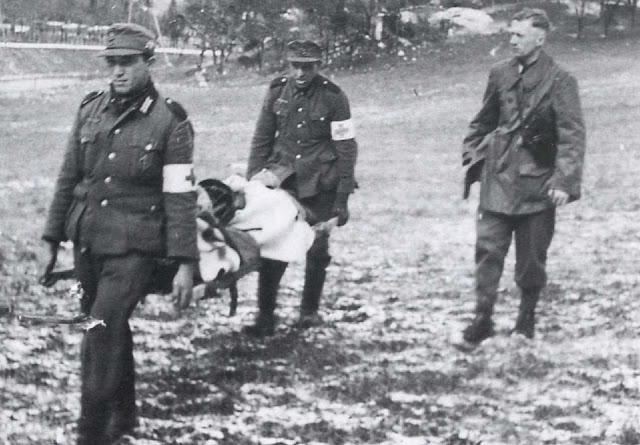On leaving the Soviet village near Yelnya, the SS-Division "Reich" troops were fired on. forcing the men to seek cover in a ditch near the road. This photograph was taken during Operation Barbarossa in 1941. The battle around Yelnya (30 August - 8 September 1941) was the first substantial reverse that the Wehrmacht had suffered during Barbarossa. Nazi propaganda presented the retreat as a planned operation. For its part, Soviet propaganda hailed the offensive as a major success and wanted to draw worldwide attention to it. Thus, the Yelnya battle was the first occasion on which foreign correspondents in the Soviet Union were allowed to visit the front. Seven of eight of them visited the area between 15 and 22 September 1941. In the words of British war correspondent Alexander Werth, the battle was built up in the Soviet Press "out of all proportion to its real or ultimate importance".
Source :
http://5sswiking.tumblr.com/post/150187757932/on-leaving-the-soviet-village-the-das-reich
https://en.wikipedia.org/wiki/Yelnya_Offensive
http://histomil.com/viewtopic.php?t=3918&start=4010
























